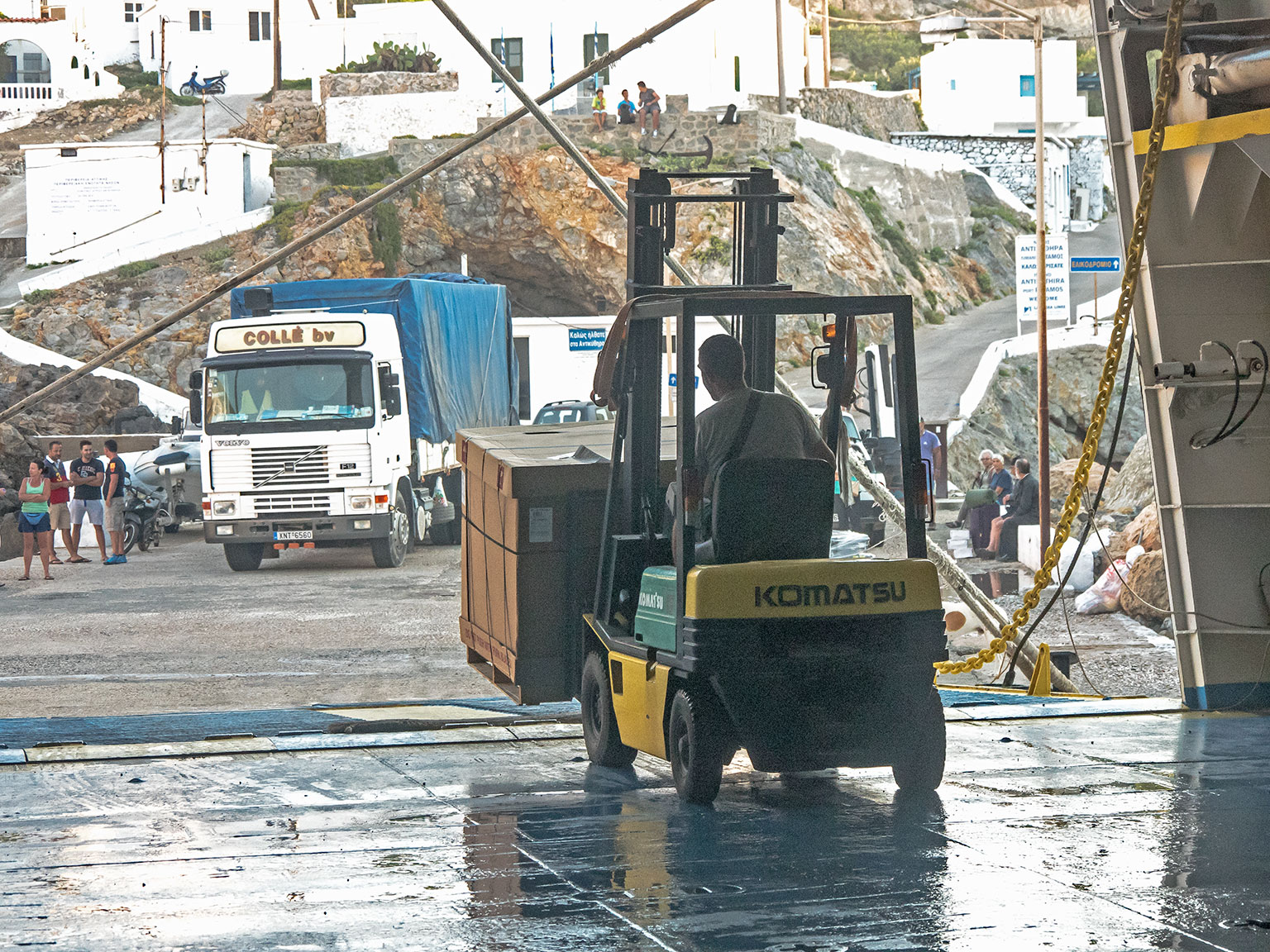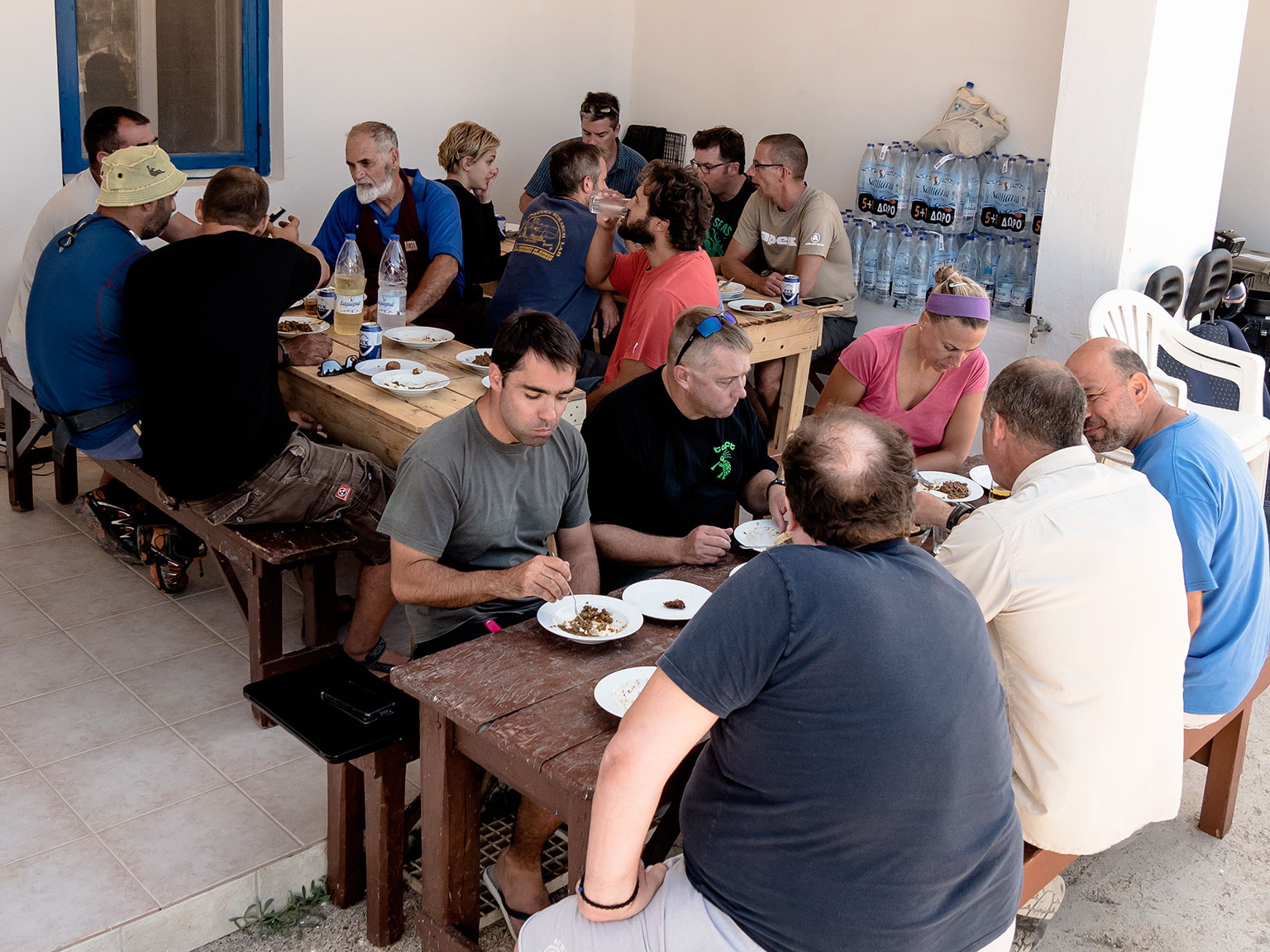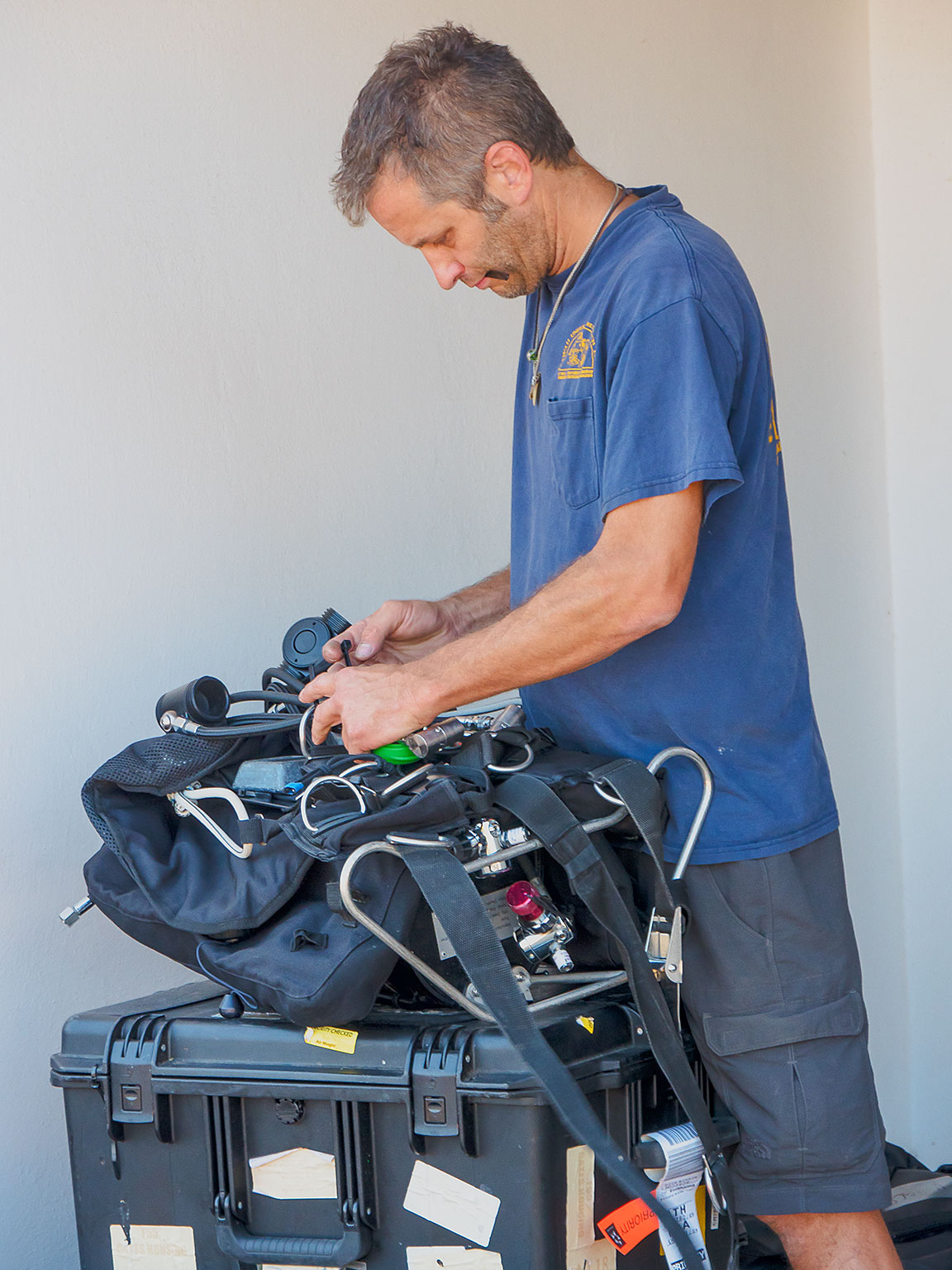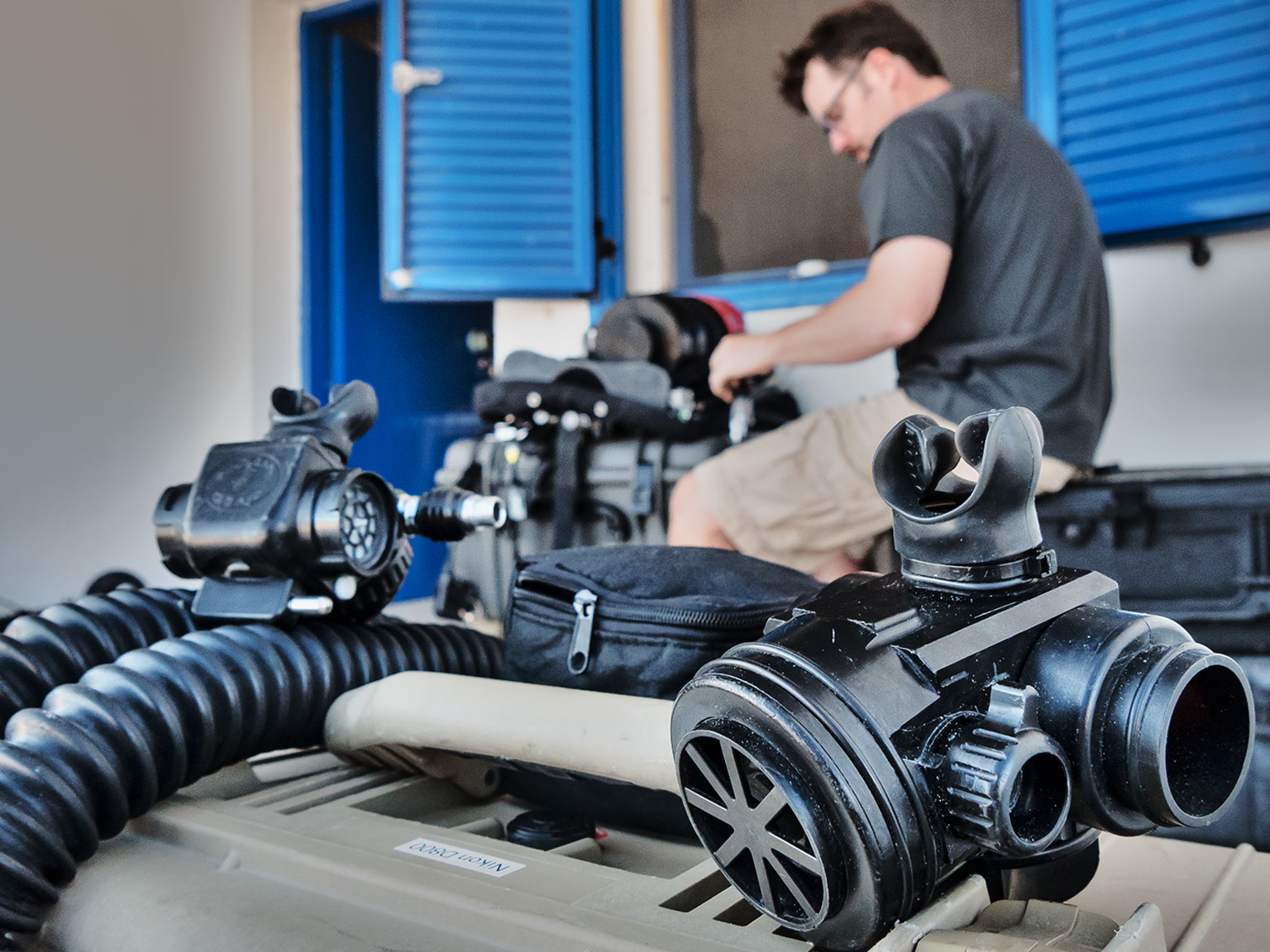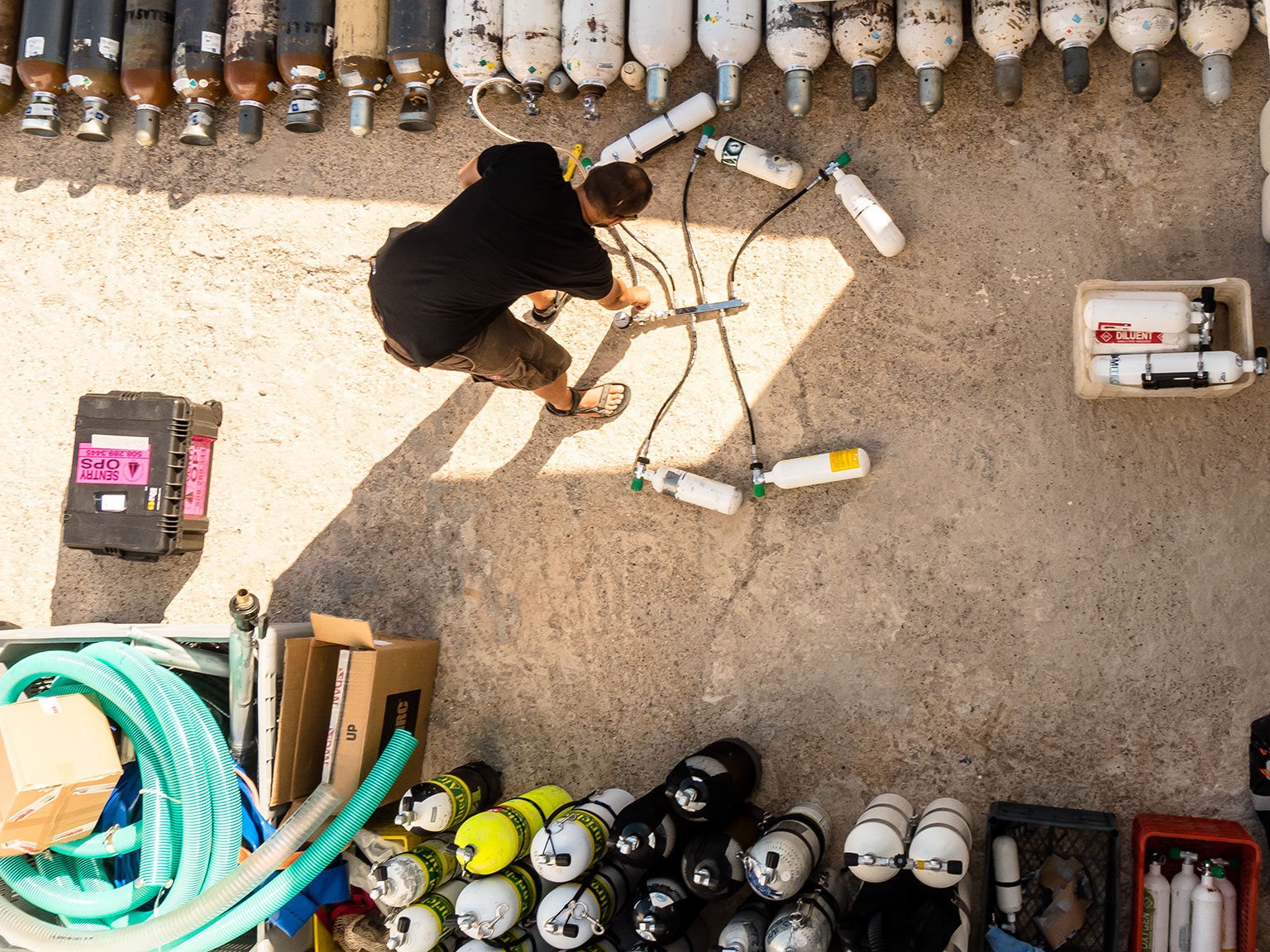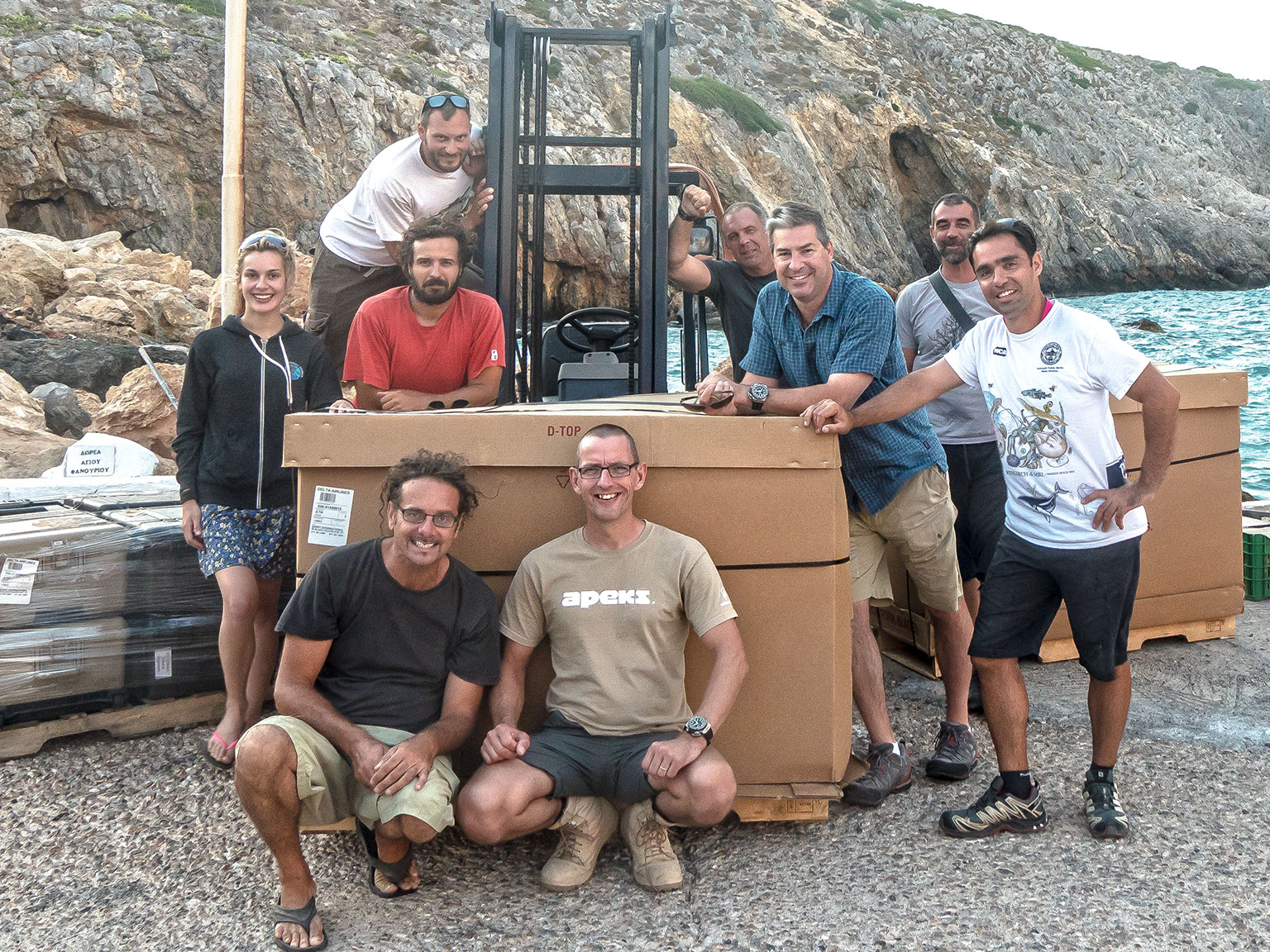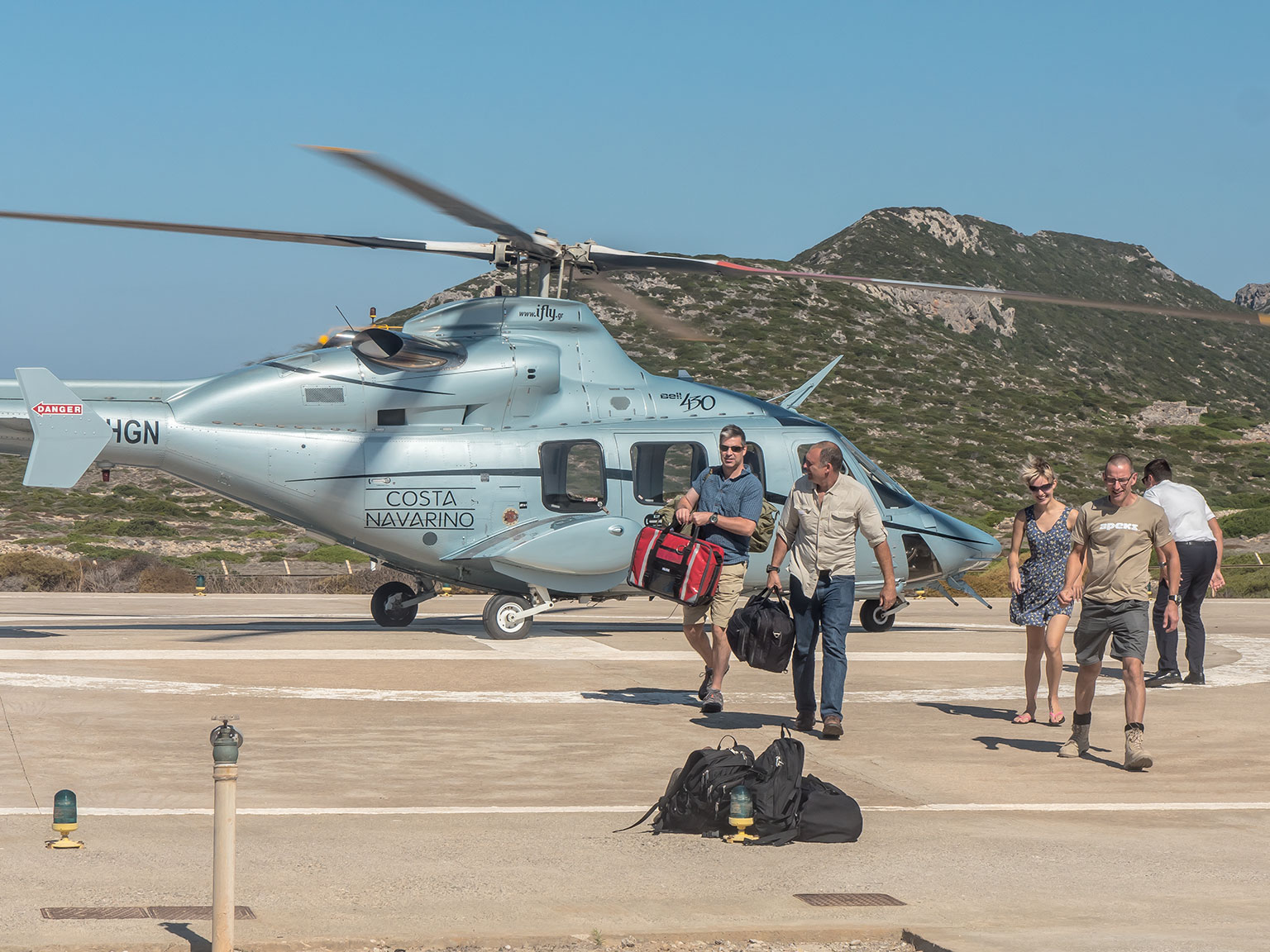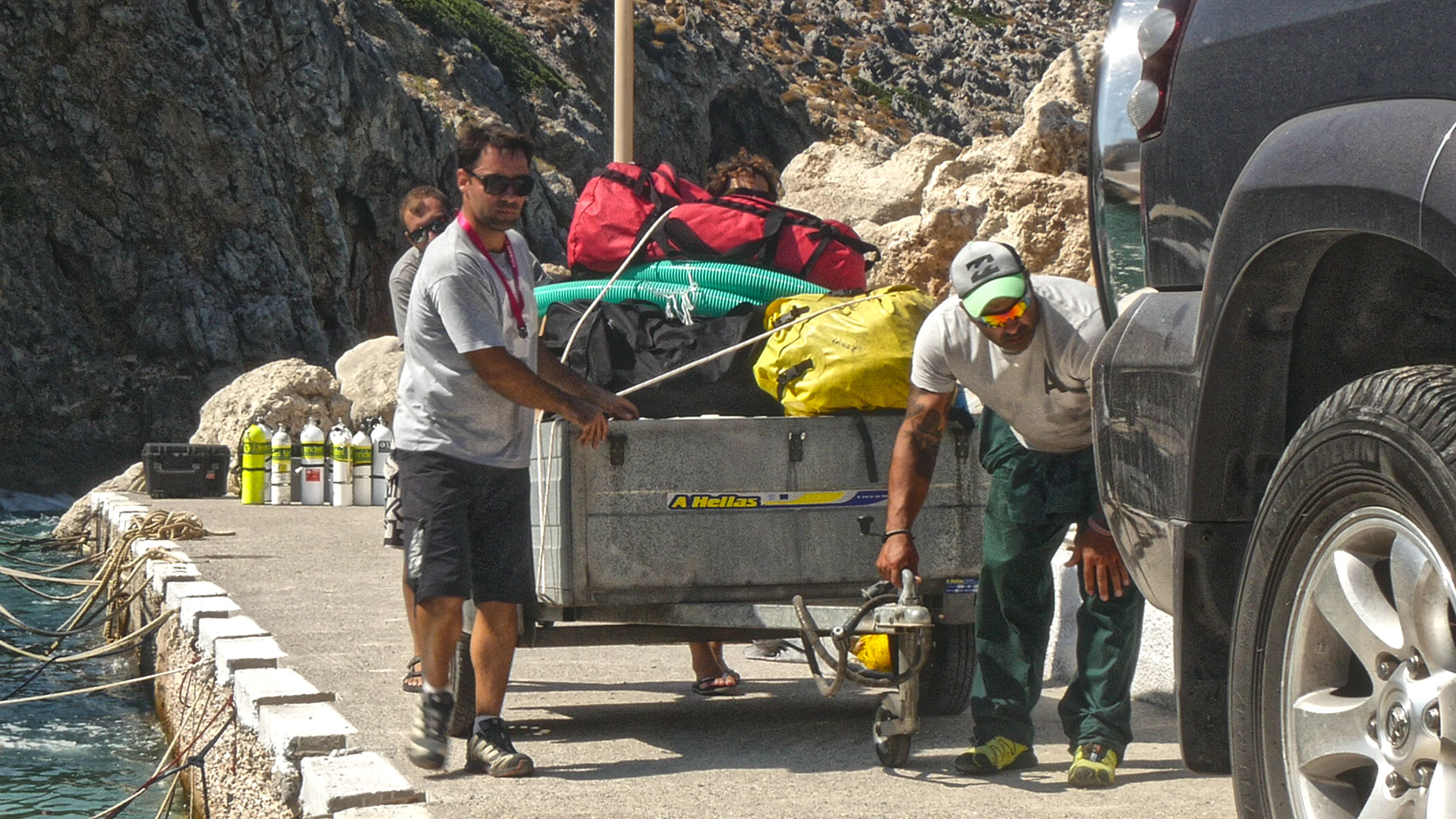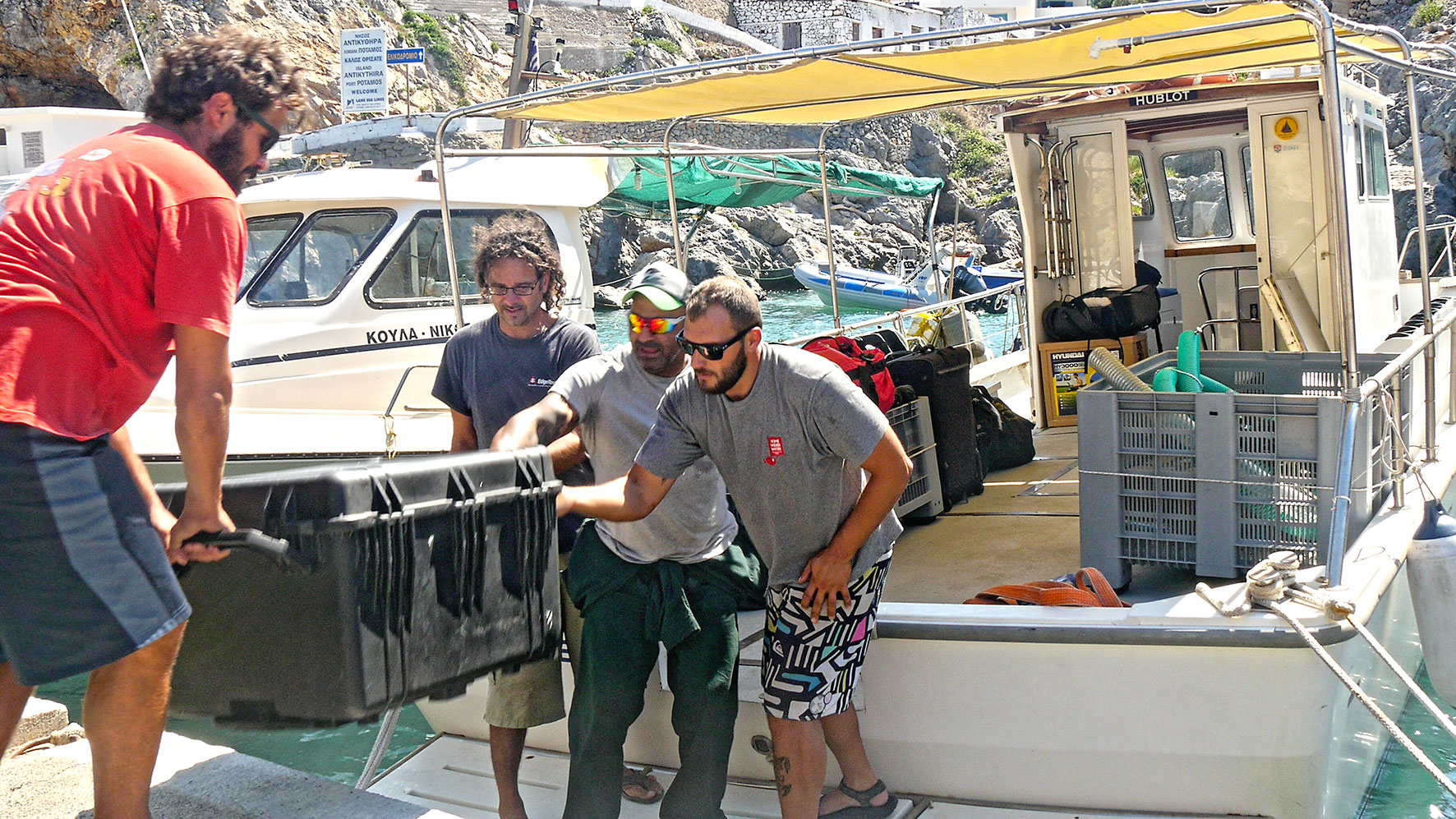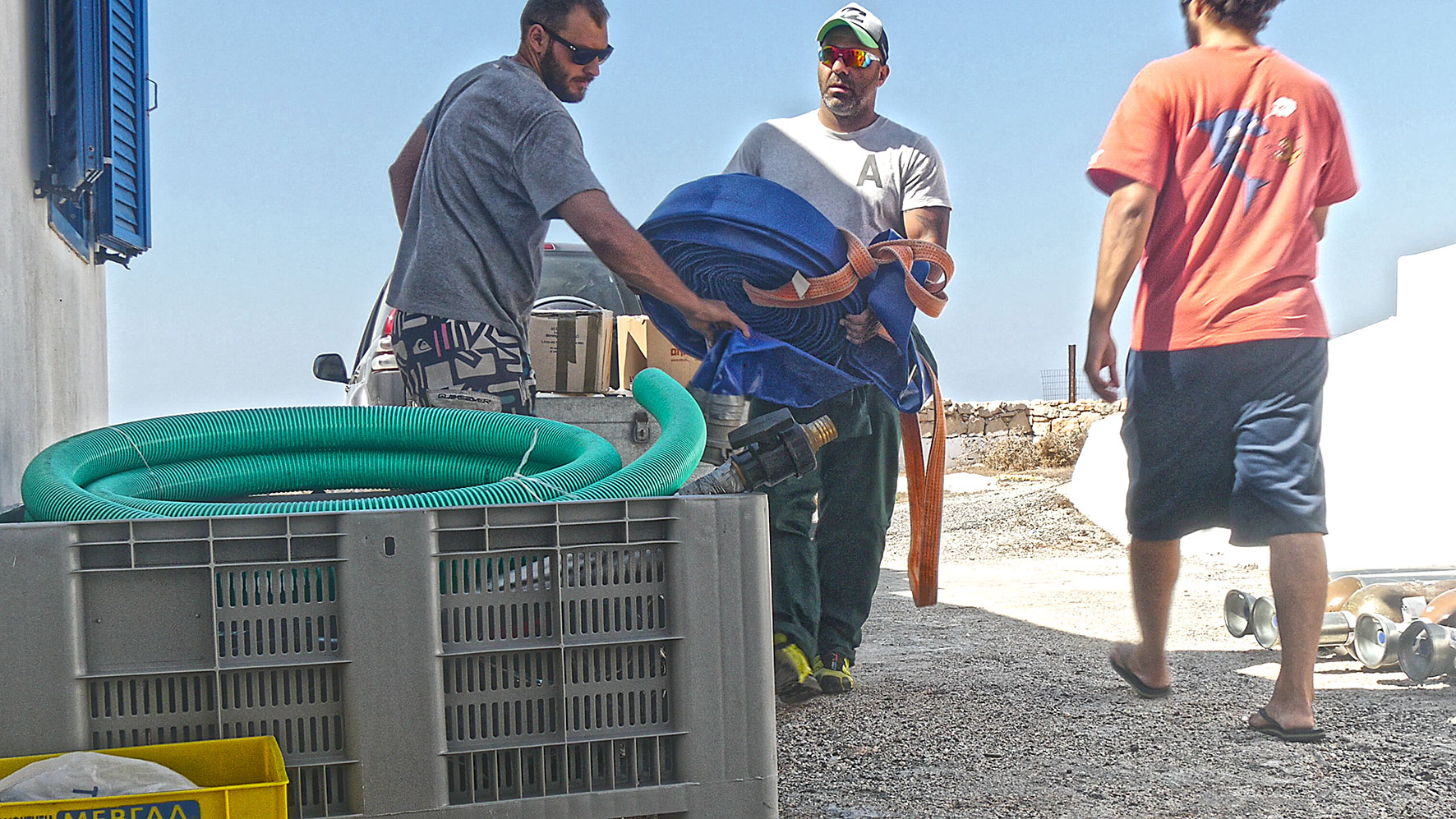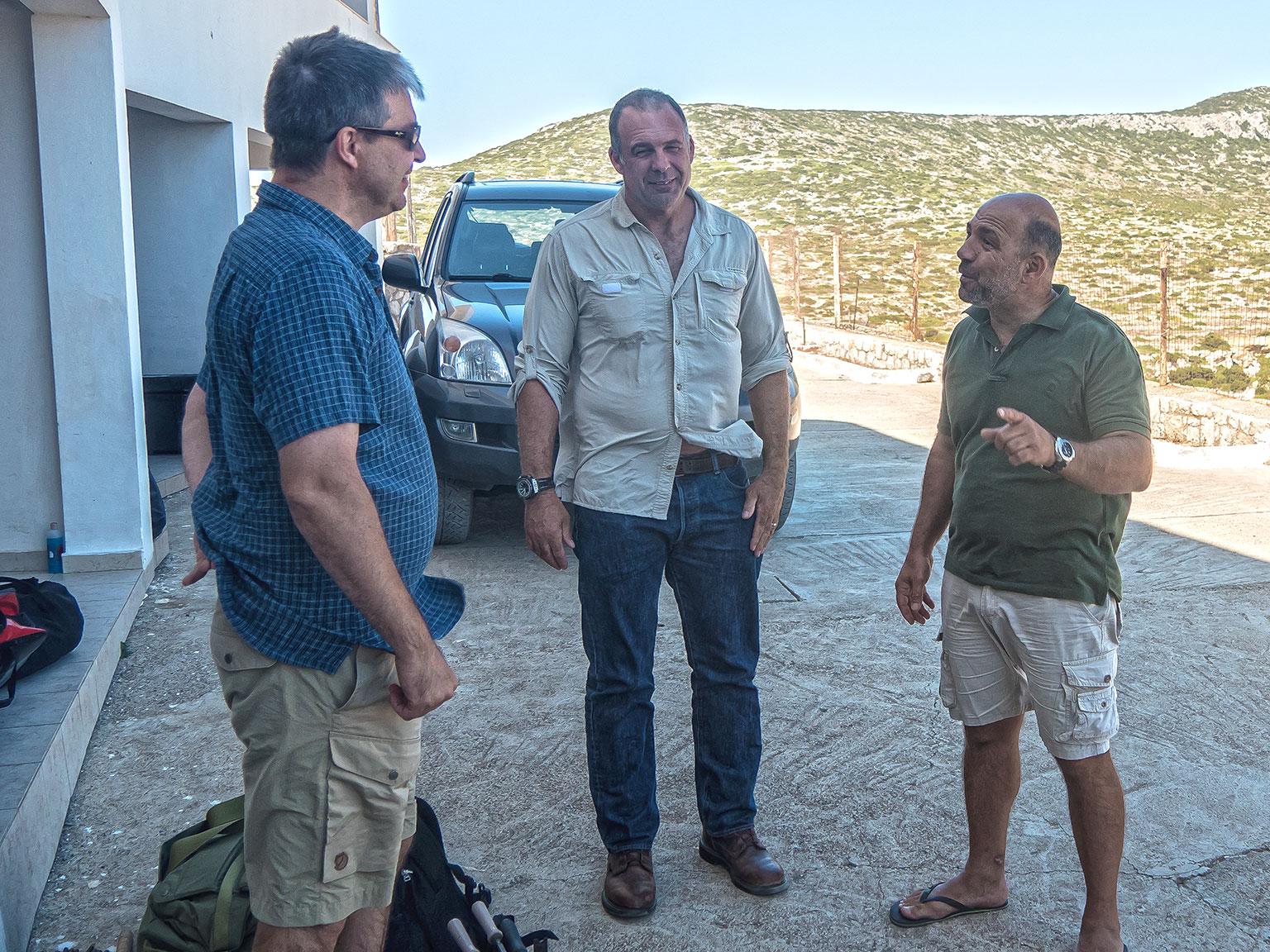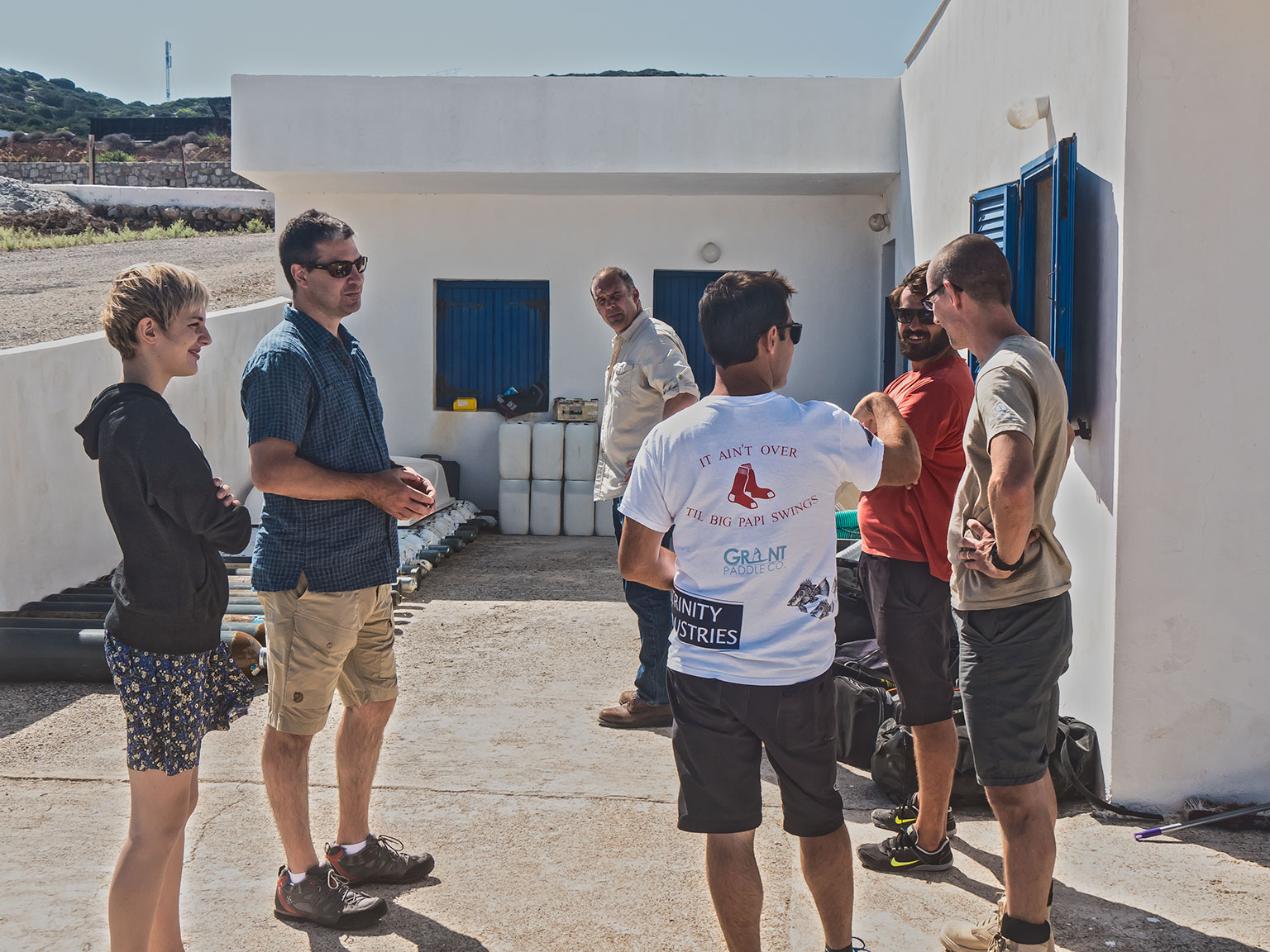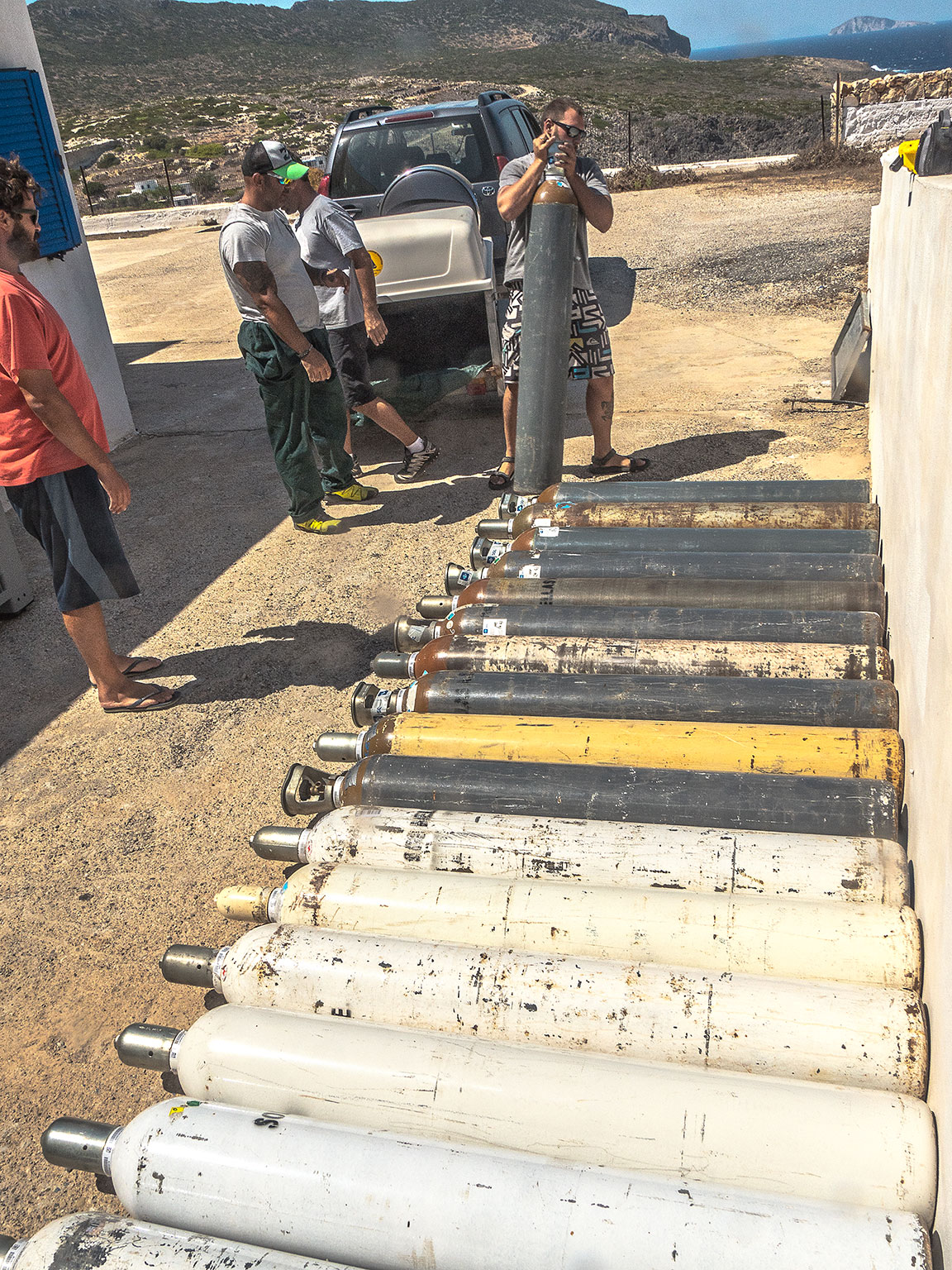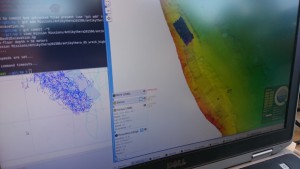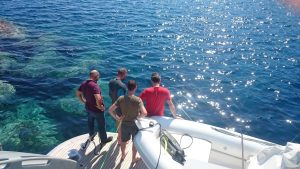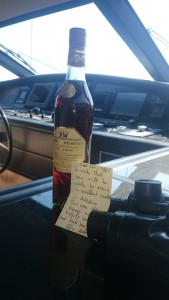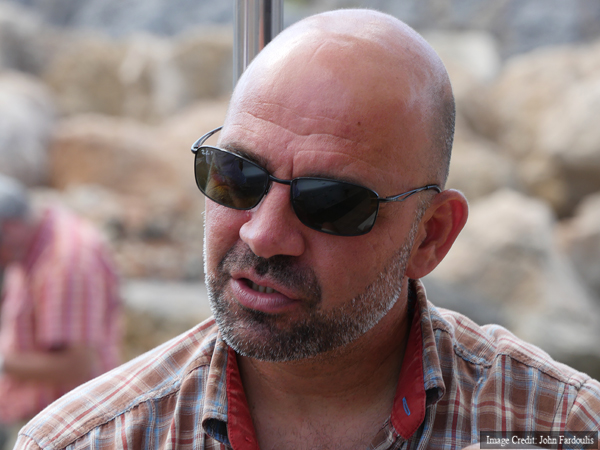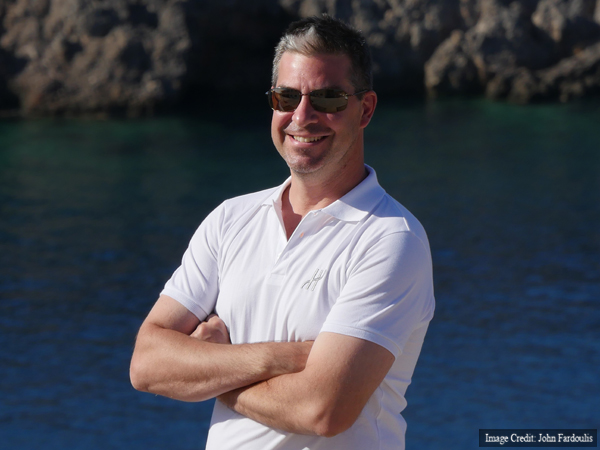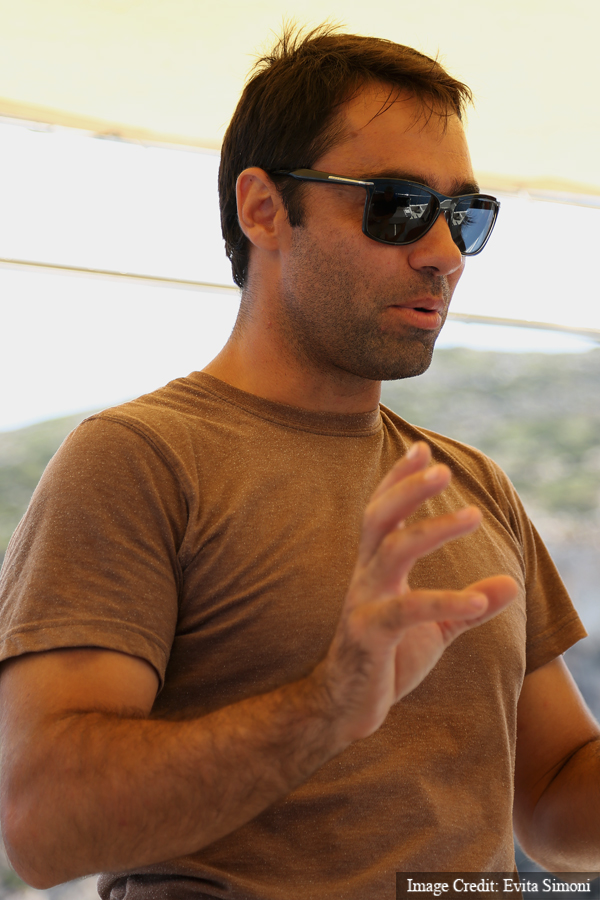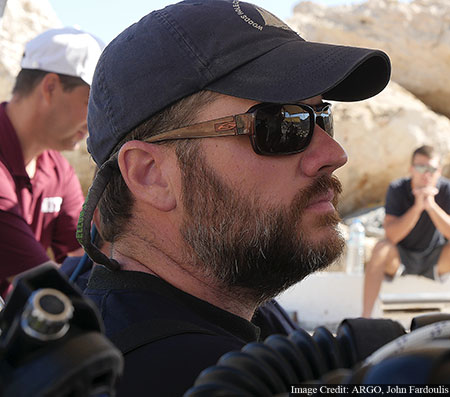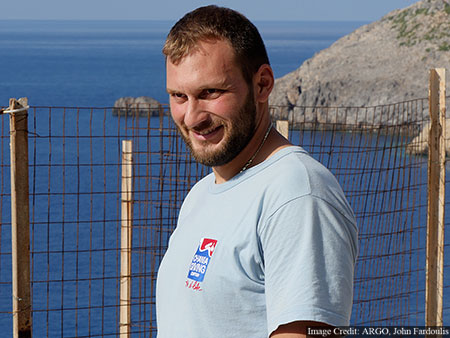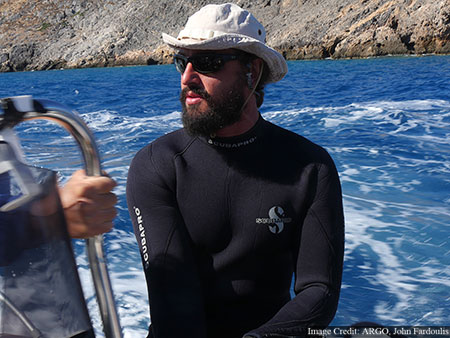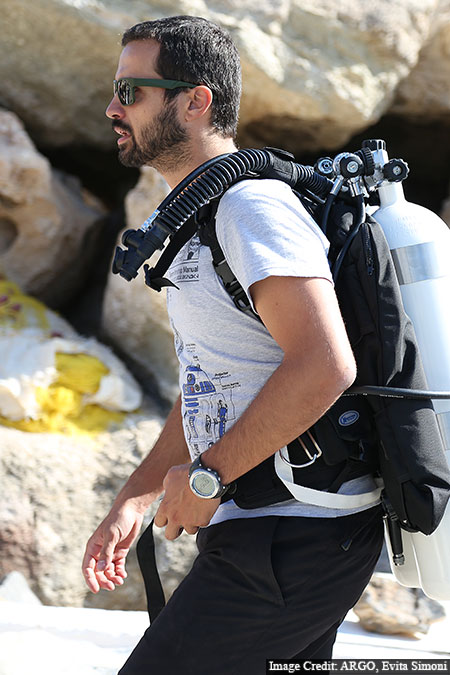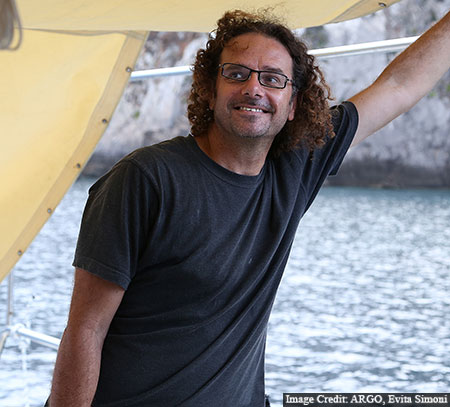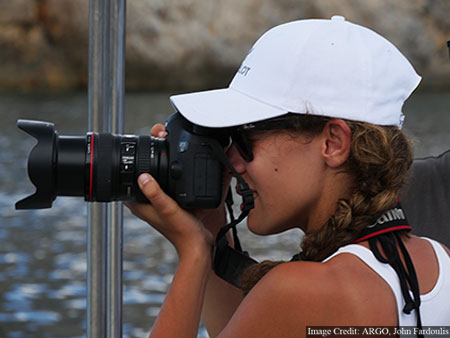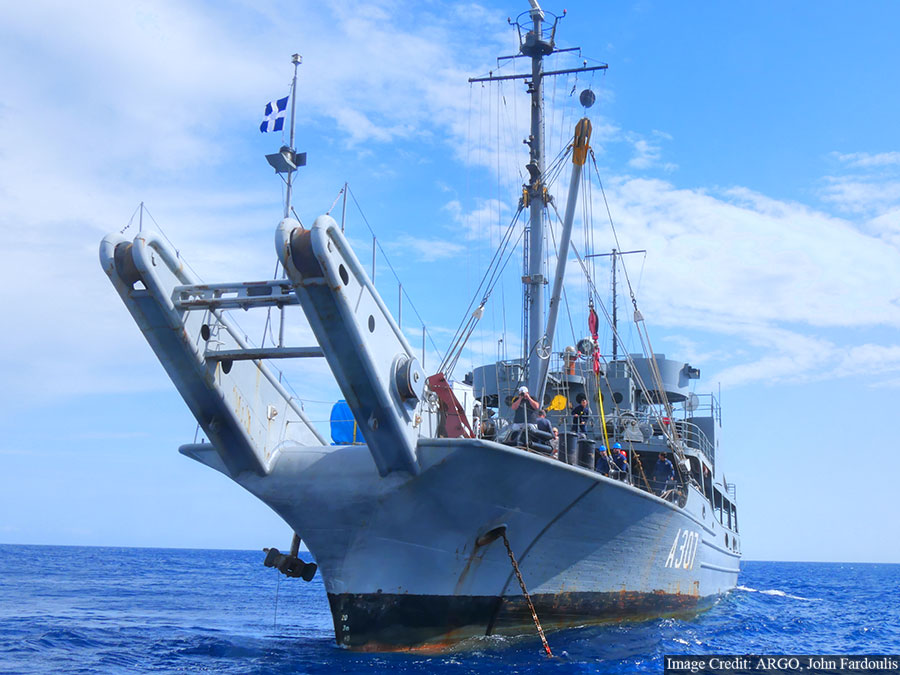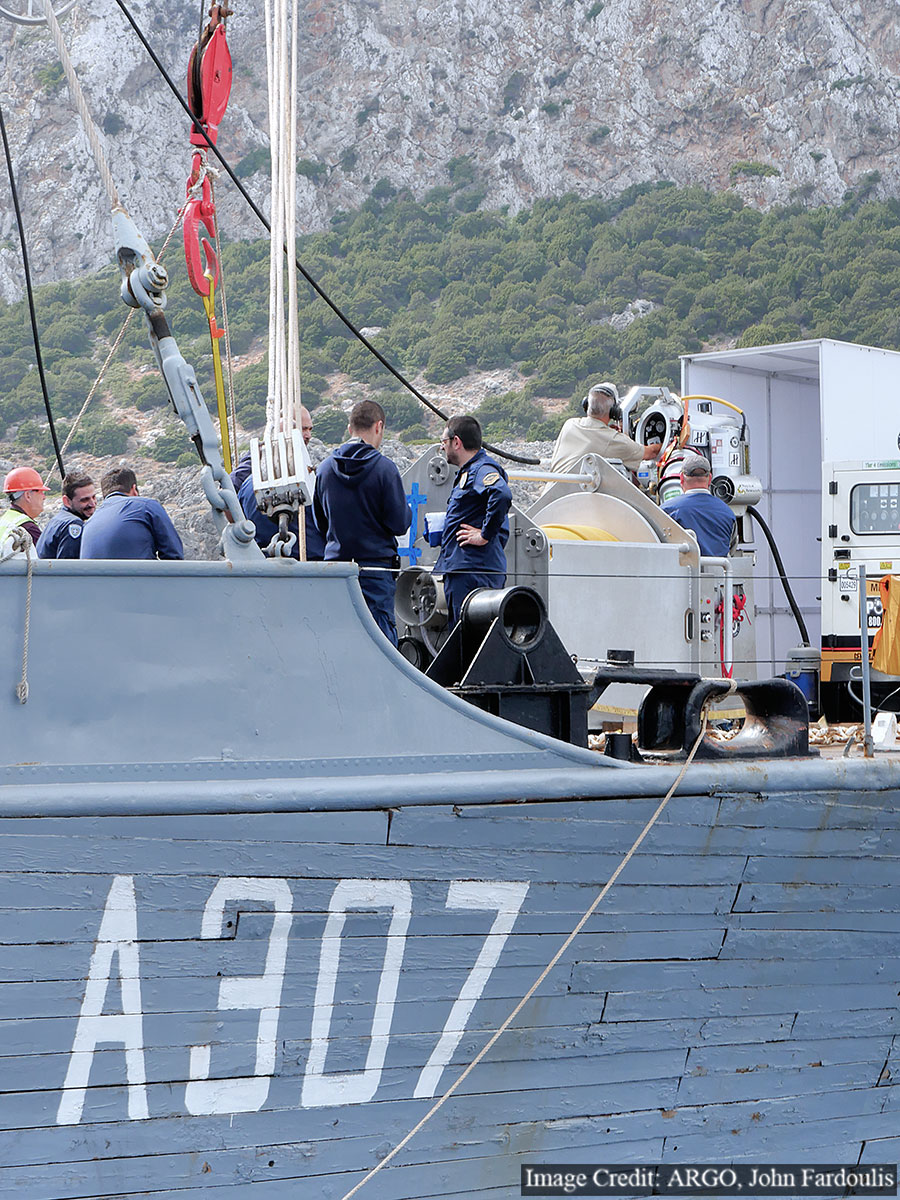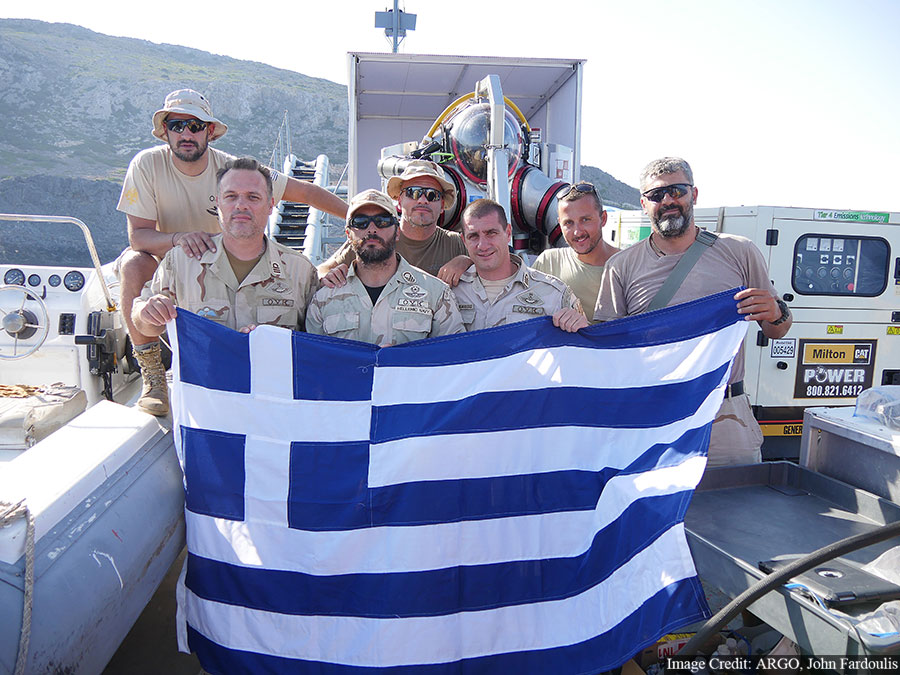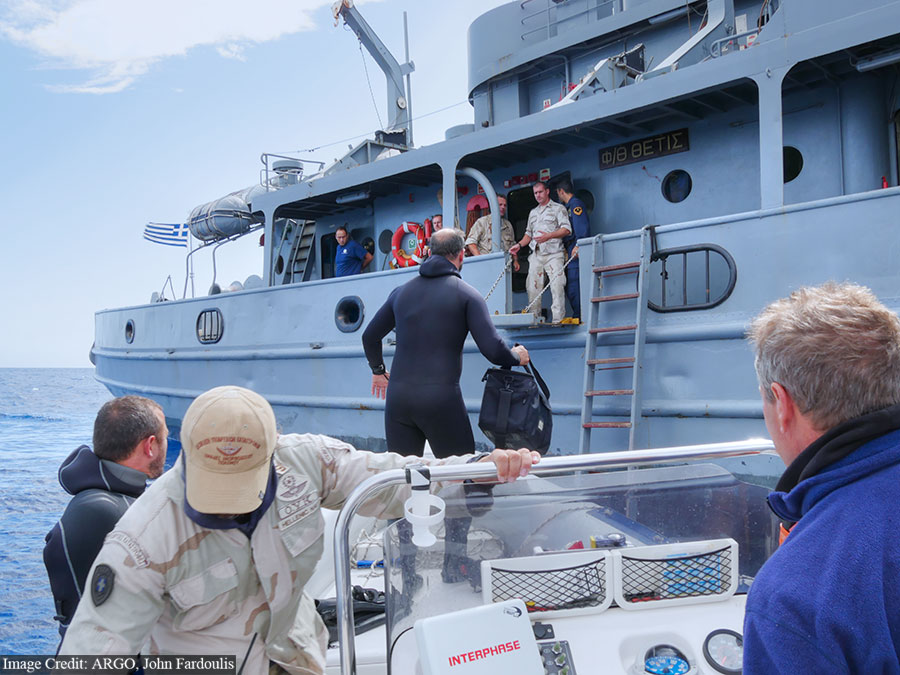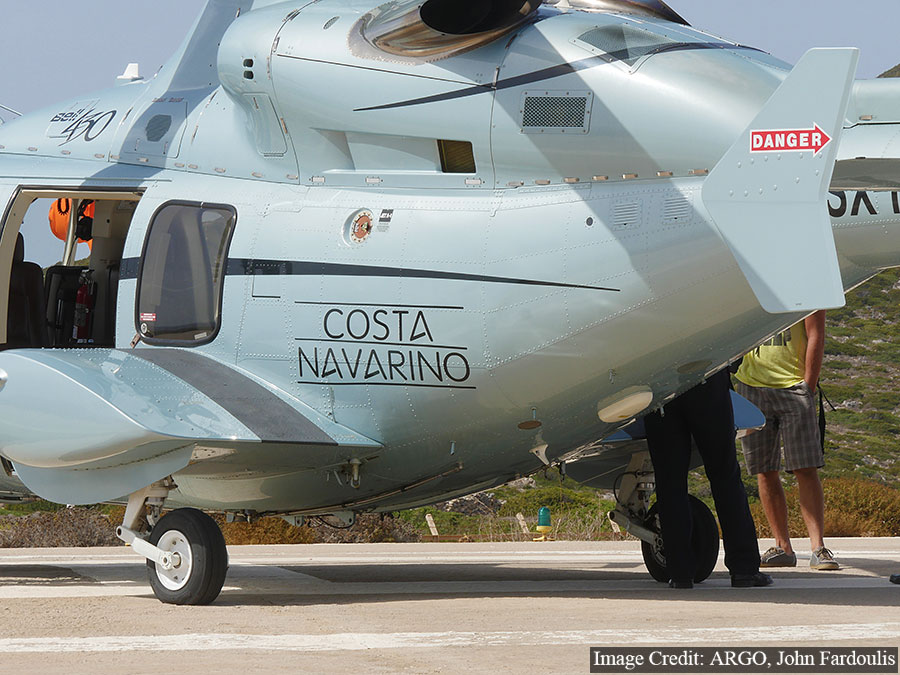Upon completion of the first phase of the underwater excavation in Antikythera in 2014, the “Aikaterini Laskaridis Foundation” hosts an academic event for the announcement of the results and findings of the excavation, as well as the future of the excavation.
An international team of scientists organized and implemented the “Return to Antikythera” Project in September and October 2014, headed by the Woods Hole Oceanographic Institution, Massachusetts, in collaboration with the Hellenic Ministry of Culture and Sports, with the support of the “Aikaterini Laskaridis Foundation” and other significant institutions.
The “Aikaterini Laskaridis Foundation” supported the project throughout its duration, by putting the ship “GLAROS” at the disposal of the team for accommodation as well as logistical support on site; by aiding the research team wholeheartedly in preparing and carrying out the actual research and excavation.
The “Aikaterini Laskaridis Foundation” will host an academic event on
Wednesday, 10 December 2014, at 19.00 at its premises (36 2nd Merarchias St & Aktis Moutsopoulou, Piraeus), in order to present the results and findings of the excavation both to the academic community and to the public. The event will be broadcasted via
live streaming on the Foundation’s website.
Addresses by:
- Mr. Constantine Tasoulas, Minister of Culture and Sports
- Mr. Efstratios Charchalakis, Mayor of Kythera and Antikythera
- Mr. Mathias Buttet, R & D Director of Hublot.
The following speakers will present the history, results and future plans of the research:
- Panagiotis C. Laskaridis, President of the “Aikaterini Laskaridis Foundation”
- Aggeliki Simosi, Director of the Ephorate of Underwater Antiquities
- Theotokis Theodoulou, Maritime archaeologist in the Ephorate of Underwater Antiquities of the Hellenic Ministry of Culture and Sports.
- Brendan Foley, Co-Director of the field project. Research Specialist in the Deep Submergence Laboratory of WHOI’s Department of Applied Ocean Physics and Engineering.
Our main aim is to incorporate the project’s results in the “Aikaterini Laskaridis Foundation”’s educational programmes as well as in our publishing activity. Already the educational programmes of the Foundation include a programme on “The Antikythera Mechanism: Astronomy and Technology in Ancient Greece”, addressed to high school students.
The Antikythera Shipwreck, dating around 60 BC, is the richest ancient shipwreck to date and it was first discovered by Symian sponge divers in 1900. A host of impressive artifacts was recovered from the shipwreck, including the extraordinary Antikythera Mechanism, the oldest “computer”. Upon the finding of such treasures, global attention turned to Antikythera, fueling great expectations for new and exciting discoveries on the shipwreck site.
For further information on the event, please contact the “Aikaterini Laskaridis Foundation”, tel.: 210 42 97 540, e-mail: info@laskaridou.gr
